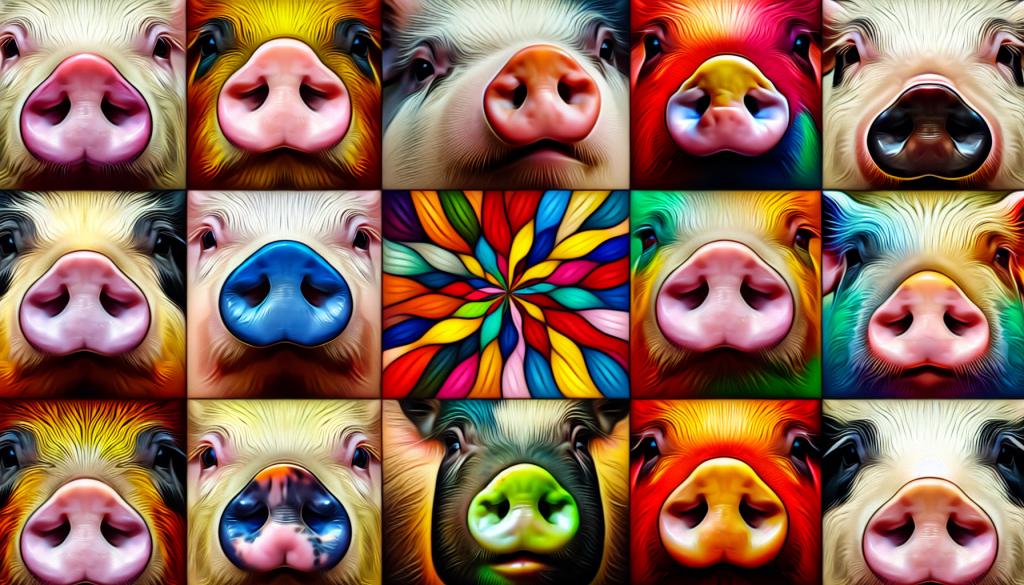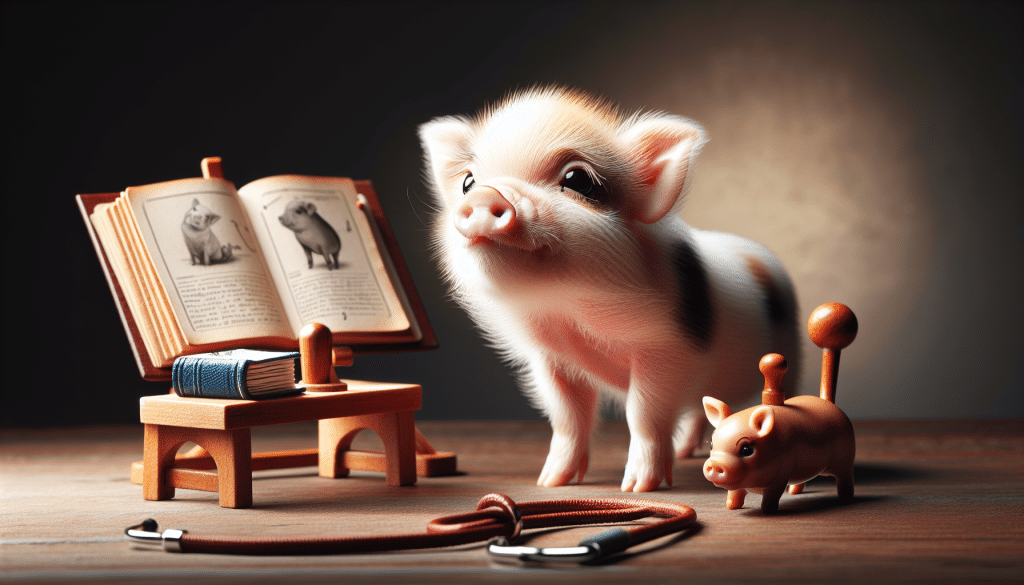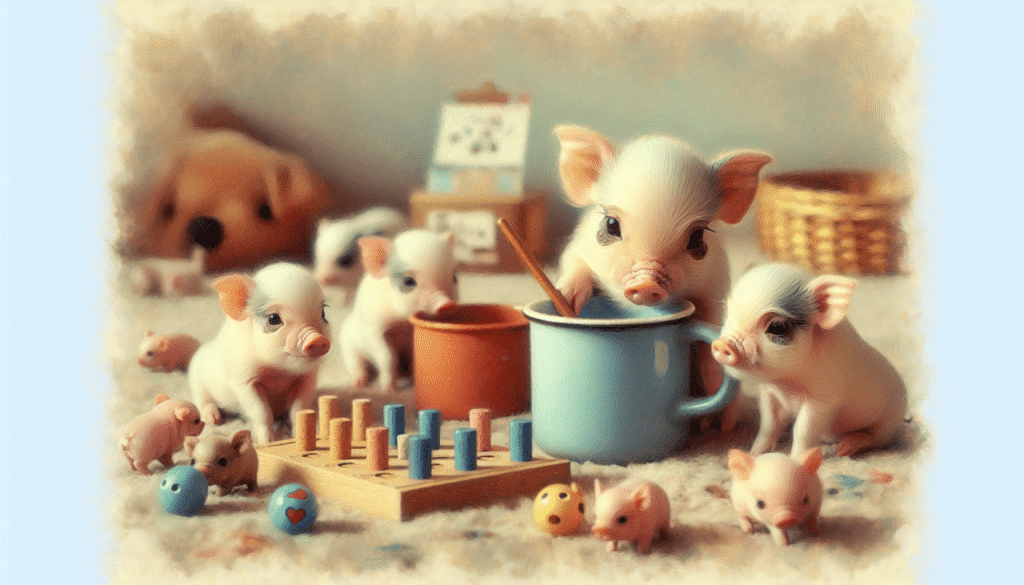So you’ve found yourself with a pig, and now you’re faced with the daunting task of trimming its hooves. Don’t panic! Trimming a pig’s hooves doesn’t have to be a complicated or overwhelming process. In this step-by-step guide, we will walk you through the process, from gathering the necessary tools to ensuring the pig’s safety and comfort throughout. By the end, you’ll be equipped with the knowledge and confidence to trim your pig’s hooves like a pro. Let’s get started!

Understanding the importance of hoof trimming
Necessity of regular hoof care for pig’s health and comfort
Hoof trimming is a crucial aspect of the overall care and maintenance of pigs. Regular hoof care is essential to ensure the health and comfort of pigs. Just like humans need regular haircuts, pigs need their hooves trimmed to prevent various problems and discomfort. Neglecting hoof care can lead to issues such as lameness, pain, and infections. Therefore, understanding the importance of hoof trimming is necessary to ensure the well-being of your pigs.
Consequences of neglected hoof care
Failure to provide regular hoof care for pigs can have severe consequences. Overgrown hooves can cause discomfort and pain to pigs, leading to lameness. When the hooves become too long, it can affect the pig’s mobility, causing them to walk unnaturally or struggle to move. This can further lead to joint and muscle problems, as well as damage to the ligaments and tendons. Additionally, neglected hoof care can become a breeding ground for bacteria and fungi, which can result in infections. These infections can be painful and may require medical intervention. Therefore, neglecting hoof care can significantly impact the health and overall well-being of pigs.
Ideal frequency of hoof trimming for pigs
The ideal frequency of hoof trimming for pigs depends on various factors, including the pig’s breed, age, and the environment they live in. In general, it is recommended to trim a pig’s hooves every 4-6 months. However, it is essential to monitor the condition of the hooves regularly and trim them as needed. Some pigs may require more frequent trimming, especially if their hooves grow quickly or if they have underlying hoof problems. Regular monitoring and adjusting the trimming frequency accordingly will ensure that the pig’s hooves are kept at an optimal length for their health and comfort.
Preparing for the task
Gathering necessary tools and equipment
Before starting the hoof trimming process, it is essential to gather all the necessary tools and equipment. These typically include:
- Hoof trimmers: Invest in a high-quality pair of hoof trimmers specifically designed for pigs. Using the right tool will make the trimming process more efficient and safer for both you and the pig.
- Hoof pick: A hoof pick will help you clean out any debris or dirt from the hoof, allowing for better inspection and trimming.
- Gloves: Wearing gloves will protect your hands from any potential injuries or infections during the process.
- Hoof rasp: A hoof rasp can be useful for smoothing rough edges or uneven surfaces after trimming.
Choosing the right environment for trimming
When it comes to trimming a pig’s hooves, selecting the right environment is crucial for both safety and ease of handling. Ideally, choose an area that is well-lit, clean, and easily accessible. A flat surface or a sturdy trimming stand can also be helpful in positioning the pig securely during the process. Additionally, ensure that the area is free from any distractions or potential hazards that might startle or harm the pig during the trimming process.
Safety measures to consider before starting
Before you begin trimming a pig’s hooves, it is essential to consider some safety measures to minimize the risk of injuries:
- Proper handling: Familiarize yourself with proper pig handling techniques to ensure the safety of both the pig and yourself. This includes understanding how to move and restrain the pig in a calm and controlled manner.
- Personal protective equipment: Wear protective gloves and any other necessary safety gear to protect yourself from potential injuries or infections.
- Securing the pig: Ensure that the pig is properly restrained during the trimming process to prevent any sudden movements or accidents. Using a handler or an assistant to help keep the pig steady can be beneficial.
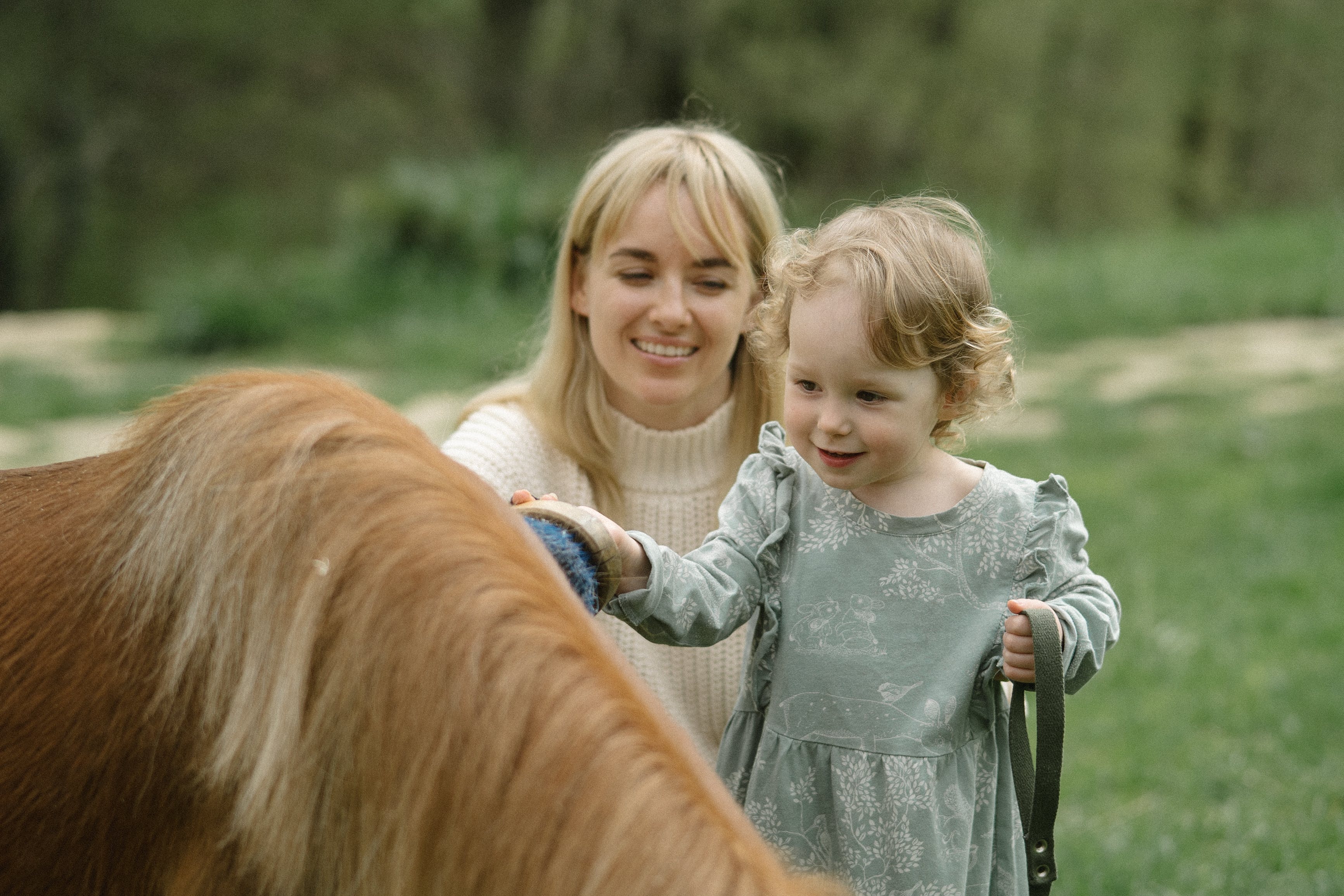
Familiarizing with pig’s hoof anatomy
Basic structure of a pig’s hoof
Before beginning the hoof trimming process, it is crucial to have a basic understanding of a pig’s hoof structure. A pig’s hoof consists of several parts, including the hoof wall, sole, heel, toe, and dewclaws. Familiarizing yourself with these parts will help you identify any abnormalities or problems during the trimming process.
Identifying parts of the hoof: heel, toe, and dewclaws
When trimming a pig’s hooves, it is necessary to be able to identify specific parts of the hoof. The heel refers to the back part of the hoof, closest to the pig’s leg. The toe is the front part of the hoof, resembling the tip of a finger or a nail. Dewclaws, if present, are additional hoof growths higher up on the pig’s leg. Being able to identify these parts accurately will help you trim the hooves effectively and ensure optimal hoof health.
Signs of a healthy and unhealthy hoof
Recognizing the signs of a healthy hoof is vital during the trimming process. A healthy hoof should have a firm texture, be free from any foul odor, and have a consistent color. The hoof wall should be strong and intact, without any cracks or excessive flaring. On the other hand, signs of an unhealthy hoof may include chipping, cracking, or separation of the hoof wall, foul odor, tenderness, or inflammation. Identifying these signs can help you address any underlying issues and prevent further complications.
Handling the Pig
Techniques for calming and restraining the pig
Handling a pig in a calm and stress-free manner is essential for a successful hoof trimming process. Some techniques that can help in calming and restraining the pig include:
- Gentle approach: Approach the pig slowly and calmly, avoiding sudden movements that might startle them.
- Positive reinforcement: Use treats or rewards to create a positive association with the hoof trimming process.
- Soft voice: Speak to the pig in a calm, reassuring tone throughout the process to help keep them relaxed.
Positioning the pig for trimming
Positioning the pig correctly during the hoof trimming process is vital for both efficiency and safety. One commonly used method is to have the pig stand with its affected hooves on a secure elevated platform or a trimming stand. This allows easy access to the hooves without causing discomfort to the pig. Additionally, having a handler or an assistant to help maintain the pig’s position can provide further stability and ensure a smoother trimming process.
Safety and comfort of the pig during the process
Ensuring the safety and comfort of the pig during the hoof trimming process is crucial. Some measures that can help maintain their well-being include:
- Avoiding excessive force: Do not apply unnecessary pressure or force on the pig’s limbs or hooves, as this can cause discomfort or injuries.
- Frequent breaks: Provide the pig with short breaks throughout the process to relieve any stress or fatigue. This will also help keep the pig more cooperative.
- Checking for signs of distress: Continuously monitor the pig for signs of distress or discomfort during the trimming, such as excessive vocalization or struggling. If you notice any signs of distress, consider taking a break and reassessing the situation.
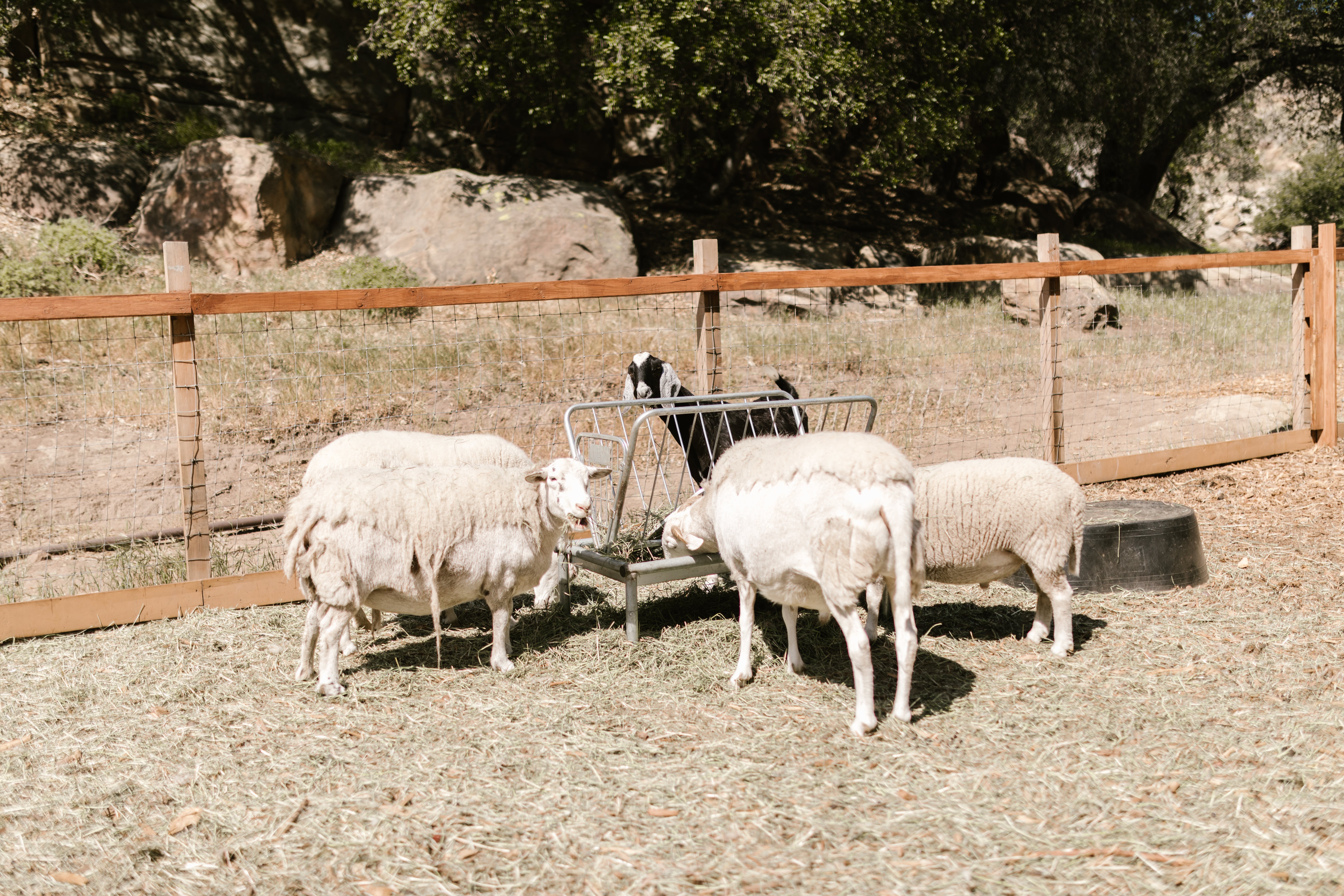
Inspecting the Hooves
Examining the need for trimming
Before starting the actual trimming, it is crucial to inspect the hooves and determine if they require trimming. Some signs that indicate the need for trimming may include overgrown hooves, uneven hoof growth, or visible cracks or chips. Regular inspections will help you identify any problems early on and prevent more significant issues from developing.
Identifying problems or injuries
During the inspection, it is essential to carefully examine the hooves for any problems or injuries. This may include looking for signs of infections, abscesses, or other conditions that require immediate attention. Injured or diseased hooves may appear swollen, tender, or show signs of bleeding. Identifying such issues will help you provide appropriate treatment or seek professional assistance, if necessary.
Looking for signs of diseases or abnormalities
Apart from common problems, it is also important to be aware of potential diseases or abnormalities that can affect a pig’s hooves. Conditions such as foot rot or hoof scald can occur in pigs and require prompt intervention. Look for signs such as the presence of foul odor, excessive discharge, or abnormal growth patterns. Being able to identify these signs early on will help in preventing the spread of diseases and maintaining good hoof health.
Starting the trimming process
Making the first cut: where to start
Once you have assessed the need for trimming and identified any issues or abnormalities, it is time to make the first cut. Start by carefully trimming the overgrown portion of the hoof wall using the hoof trimmers. Begin at the toe and slowly work your way towards the heel. Take small, controlled cuts to avoid cutting too deep or causing injury. Regularly assess the progress to ensure that you are achieving the desired length.
Guidelines for cutting the hoof wall
When cutting the hoof wall, it is important to follow some guidelines to ensure proper trimming:
- Avoid cutting too close: Be cautious not to cut into the sensitive living tissue known as the quick. Cutting into the quick can cause pain and bleeding. Leave a safe margin between the trimmed edge and the quick to prevent such injuries.
- Maintain an even length: Trim the hoof wall in a way that maintains an even length across the entire hoof. This will help maintain balance and proper weight distribution while walking.
- Smooth rough edges: After trimming, use a hoof rasp to smooth any rough edges or uneven surfaces. This will prevent potential cracks or chips from developing.
Trimming the excess growth without causing injury
The primary goal of hoof trimming is to remove the excess growth without causing any harm to the pig. While trimming, it is important to be patient and take small, controlled cuts to maintain accuracy and prevent injury. It is better to trim slightly less initially and re-evaluate the hoof’s condition before making further adjustments. Regularly inspect the hooves during the process to ensure that the trimming is done correctly and that the pig remains comfortable.
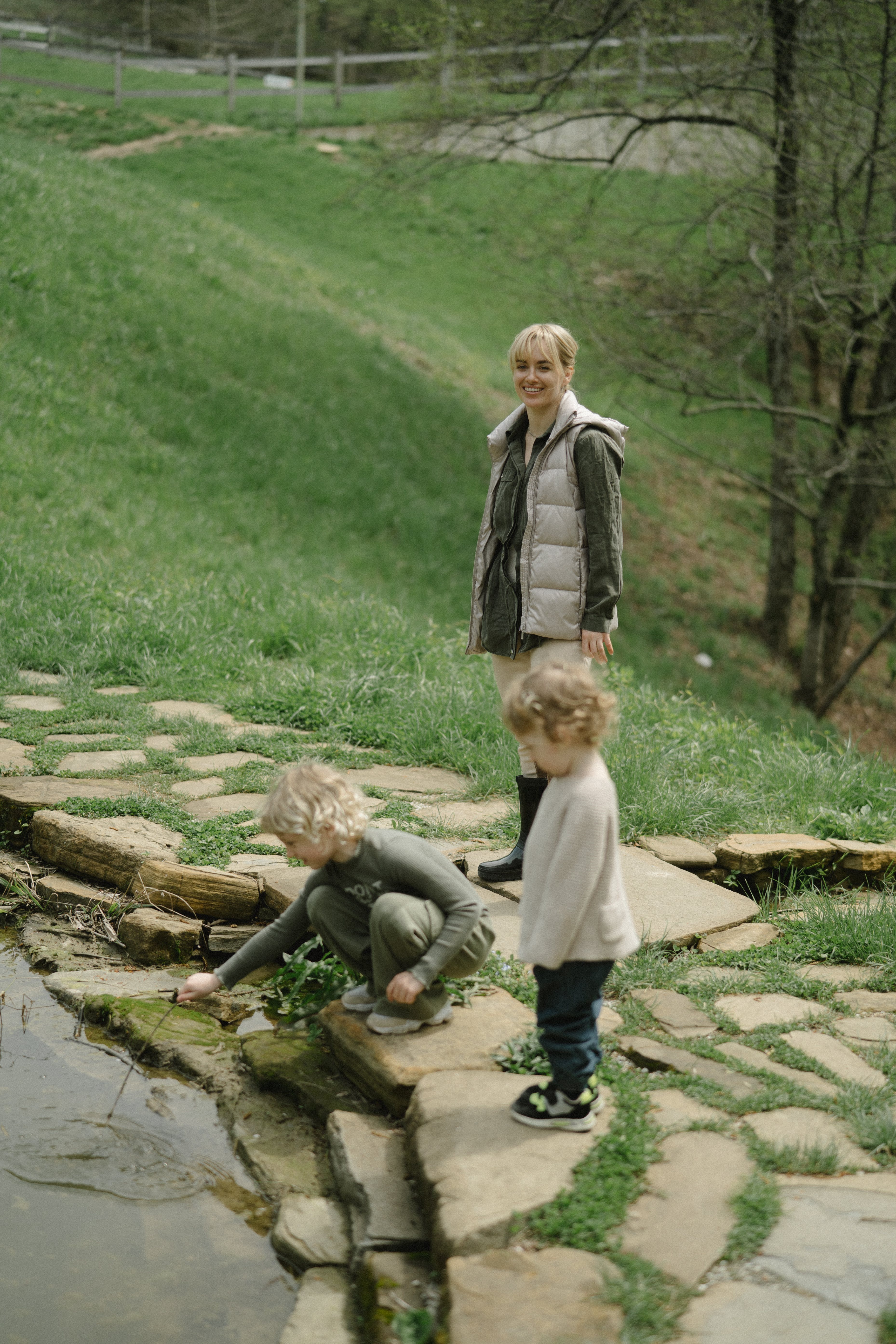
Dealing with the dewclaws
Understanding the importance of dewclaws
Dewclaws are additional hooves that may be present higher up on a pig’s leg. Although they do not usually make contact with the ground like the main hooves, dewclaws still require attention during the trimming process. Neglected dewclaws can become overgrown and cause discomfort to the pig. Trimming them regularly helps prevent issues and maintain overall hoof health.
Procedure for trimming dewclaws
To trim the dewclaws, gently lift the pig’s leg and rest it on a secure surface or in your lap. Use the hoof trimmers to trim the excess growth of the dewclaws. Take care not to cut too close to the quick, as dewclaws can sometimes be more sensitive than the main hooves. Proceed with small, controlled cuts and monitor the pig for any signs of distress or discomfort.
Avoiding potential problems with dewclaw trimming
While trimming the dewclaws, it is essential to be cautious and avoid potential problems:
- Preventing injuries: Be careful not to twist or pull the pig’s leg too forcefully. This can cause injury or stress to the pig.
- Regular monitoring: Continuously assess the dewclaws during the trimming process for any signs of inflammation, bleeding, or tenderness. If any issues are noticed, adjust the trimming technique or seek veterinary assistance, if necessary.
Identifying and handling hoof problems
Common hoof diseases and conditions in pigs
Pigs can be prone to various hoof diseases and conditions that can significantly impact their well-being. Some common hoof problems seen in pigs include foot rot, hoof abscesses, and laminitis. These conditions can be painful and require prompt treatment to avoid further complications. Regular inspections and early intervention play a crucial role in preventing and managing these issues effectively.
Treatment of hoof crack or injury
If you notice a hoof crack or injury during the inspection, it is important to address it promptly. Cleaning the affected area with an antiseptic solution can help prevent infections. Depending on the severity of the crack or injury, treatment may involve applying bandages, using hoof boots for protection, or seeking professional assistance. Additionally, providing appropriate bedding and managing the pig’s environment can aid in the healing process and prevent further damage.
When to call for professional or veterinary help
While routine hoof trimming can be done by pig owners, certain situations may require professional or veterinary help. If you encounter severe hoof diseases, infections, or injuries that are beyond your expertise, it is important to seek assistance. Trained professionals or veterinarians have the knowledge and experience to handle complex hoof problems and ensure proper treatment. Do not hesitate to ask for help when necessary to provide the appropriate care for your pigs.
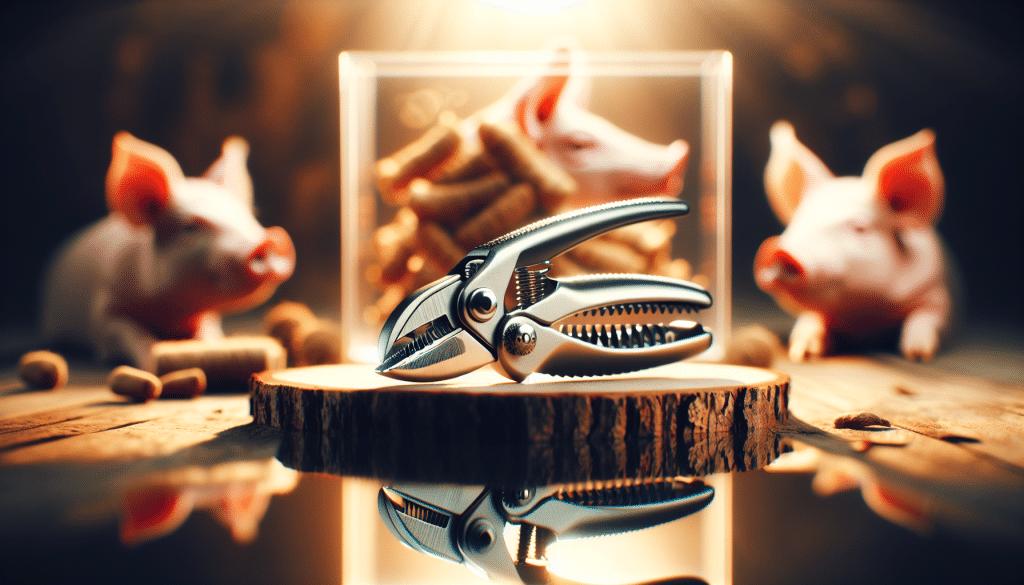
After-care and prevention
Post-trimming care for the pig
After the hoof trimming process is complete, it is important to provide proper after-care for the pig. This includes keeping them in a clean and comfortable environment, free from dampness or excessive exposure to filth. Regularly monitor the hooves for any signs of redness, swelling, or infections that may have occurred during the trimming process. Providing suitable bedding can help maintain hoof cleanliness and prevent further issues.
Tips for maintaining good hoof health
Maintaining good hoof health is not just about trimming; it also requires continuous care and attention. Here are some tips to help keep your pig’s hooves in optimal condition:
- Regular inspections: Regularly inspect the hooves for signs of overgrowth, cracks, or infections. Early detection allows for prompt intervention and prevents the development of more severe problems.
- Clean and dry environment: Ensure that the pig’s living space is clean, dry, and well-maintained. A clean environment helps prevent the accumulation of bacteria and fungi that can cause hoof infections.
- Balanced diet: A balanced diet that includes essential nutrients such as biotin can promote healthy hoof growth. Consult with a veterinarian or nutritionist to determine the appropriate diet for your pigs.
Common mistakes to avoid during hoof care process
While trimming a pig’s hooves, there are some common mistakes that should be avoided:
- Cutting too deeply: Cutting too close to the quick can cause pain, bleeding, and potential infections. Take small, controlled cuts to ensure the safety and comfort of the pig.
- Neglecting regular trimming: Failing to trim the hooves regularly can lead to overgrowth and discomfort for the pig. Be consistent with the trimming schedule to maintain good hoof health.
- Ignoring signs of distress: Continuous monitoring and recognizing signs of distress during the trimming process are essential. If the pig shows signs of discomfort or stress, take a break and adjust your approach as needed.
Training and habituation
Importance of regular handling for ease of hoof care
Regular handling and interaction with pigs play a significant role in making the hoof care process easier. By exposing pigs to routine handling from a young age, they become more accustomed to being touched and restrained. This helps reduce stress and anxiety during the trimming process, making it easier for both the pig and the caregiver.
Training pigs for hoof care procedures
Training pigs for hoof care procedures can be beneficial in ensuring cooperation and reducing stress. Positive reinforcement techniques, such as offering treats or rewards during the training process, can create a positive association with hoof care. Gradually introduce the pig to the various tools and trimming techniques, rewarding them for their calm behavior. Consistency and patience are key to successfully training pigs for hoof care procedures.
Benefits of habituation: making hoof care easier over time
Habituation is the process of familiarizing pigs with the hoof care routine, making it easier over time. By consistently exposing pigs to the hoof trimming process, they become more comfortable and cooperative. Habituation helps reduce stress and resistance, making the trimming process smoother and more efficient. Additionally, habituated pigs are more likely to exhibit fewer signs of distress, making it a positive experience for both the pig and the caregiver.
In conclusion, understanding the importance of hoof trimming is essential for the health and well-being of pigs. Regular hoof care prevents problems such as lameness, infections, and discomfort. By following proper procedures, gathering the necessary tools, and taking safety measures, you can ensure a successful hoof trimming experience. Familiarizing yourself with a pig’s hoof anatomy and identifying signs of a healthy or unhealthy hoof is crucial for effective trimming. Handling the pig with care, inspecting the hooves thoroughly, and making controlled cuts are essential steps in the hoof trimming process. Dealing with dewclaws, identifying and handling hoof problems, and seeking professional help when needed are crucial for maintaining optimal hoof health. Finally, prioritizing after-care, prevention, and training can help make the hoof care process smoother and more beneficial in the long run.

